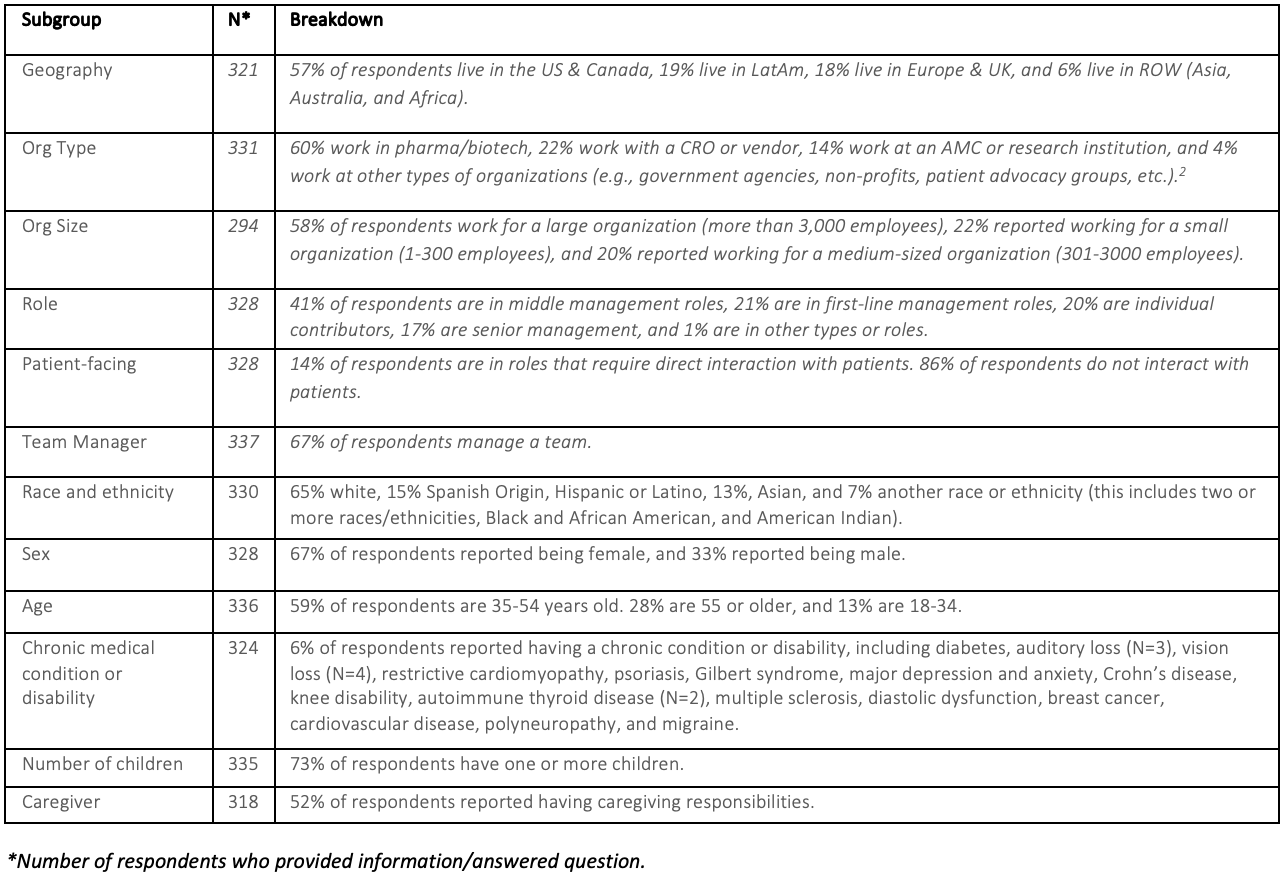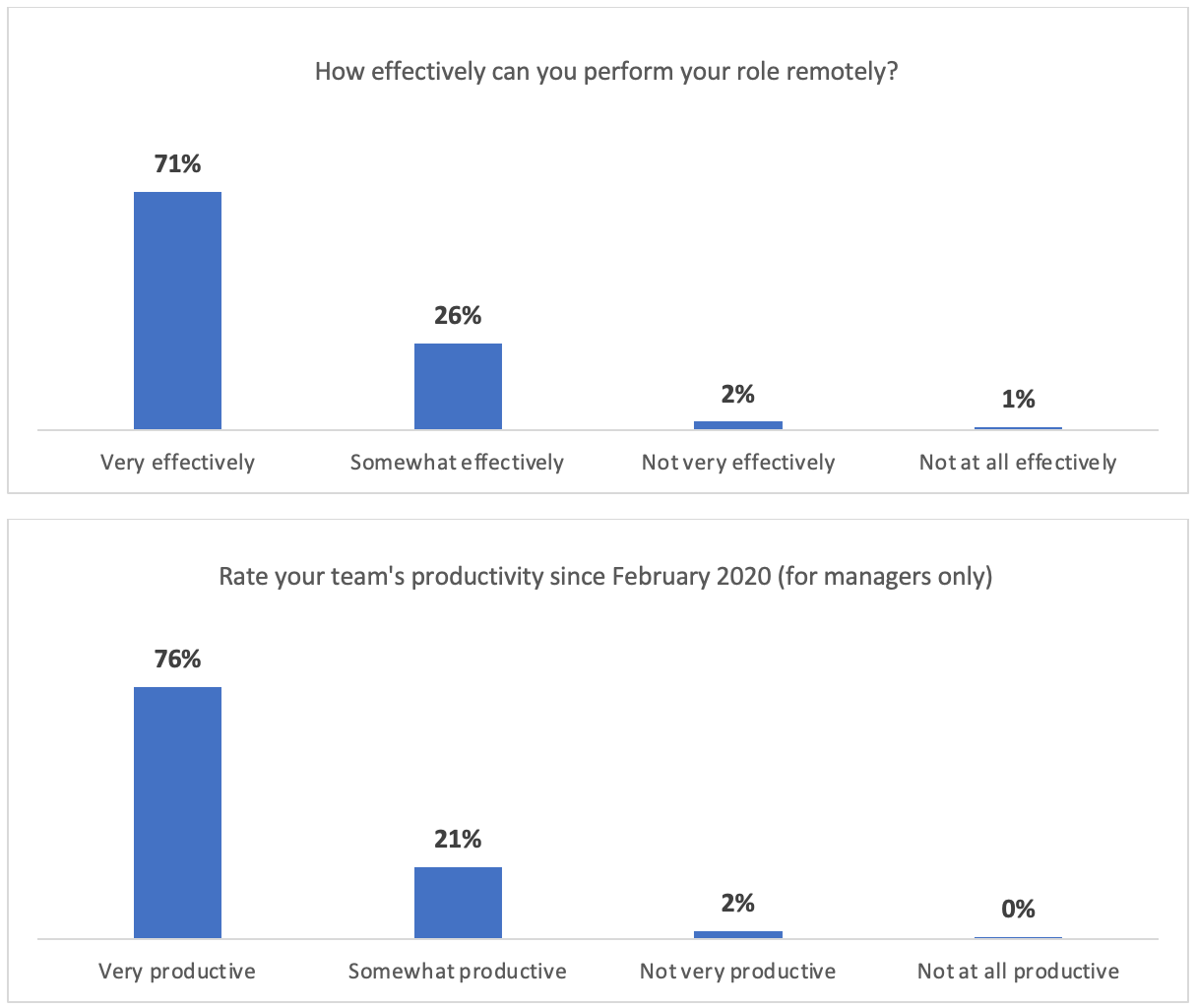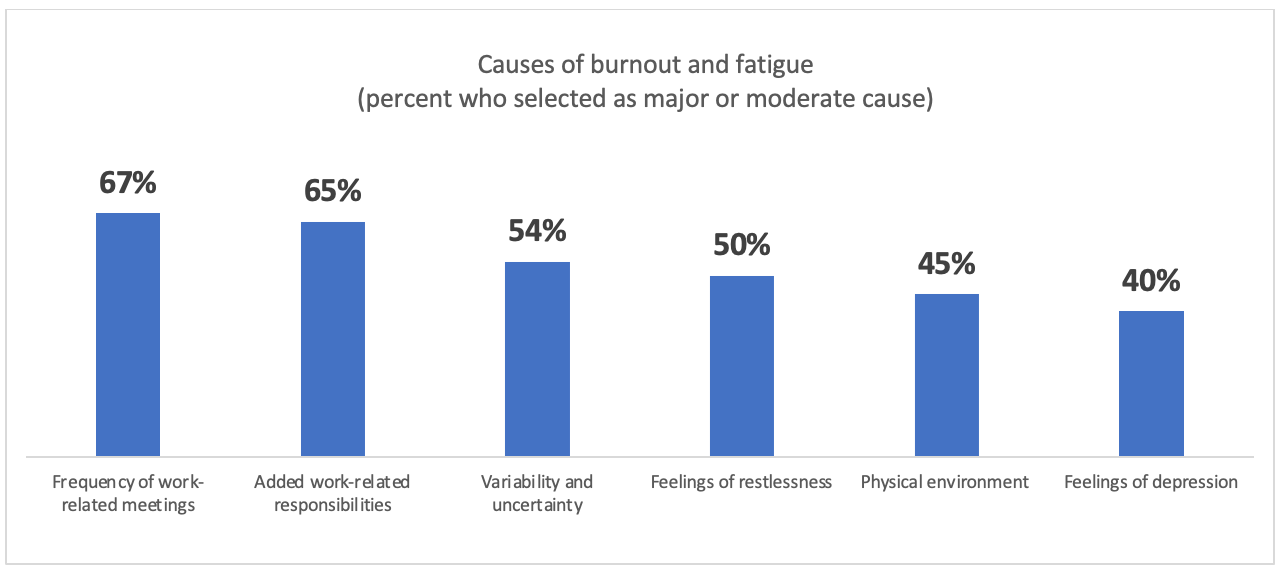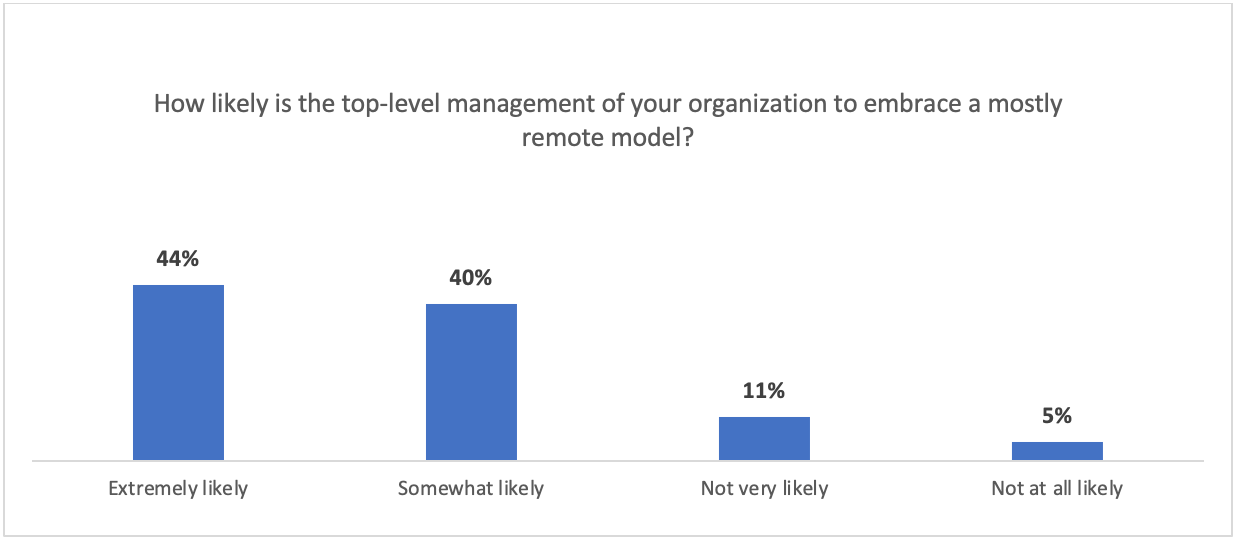Remote Clinical Research Team Experience and Effectiveness During the COVID-19 Pandemic
A summary of how organizations approached remote operating models and the experiences and effectiveness of clinical research professionals in their roles and responsibilities during the COVID-19 pandemic.
Remote and virtual clinical research team collaboration has been a defining characteristic of global drug development activity during the pandemic. This article, based on research conducted between September 2020 and April 2021, summarizes how organizations approached adapting to remote operating models and the associated experiences and effectiveness of clinical research professionals managing their roles and responsibilities.
The goal of this article is to provide insight into lessons learned, and to guide considerations about the future of remote team collaborations within biopharmaceutical companies and other stakeholders in the clinical research enterprise.
The results reveal that drug development professionals have been mostly satisfied with their organizations’ remote preparedness and responsiveness and feel supported by their managers and organizations. In addition, clinical research professionals operating remotely during this global health crisis perceive that their productivity and effectiveness levels have been high, and the majority wish to continue to work remotely. The results also show that there are areas requiring attention: 55% of respondents reported feeling burned out and 42% reported that connections with colleagues had deteriorated.
Background
Tufts CSDD research conducted early in the pandemic4 captured the variety of remote and virtual approaches being utilized. As expected, communication technologies—including video conferencing, cloud-based file sharing and telehealth—were the predominant approaches being used by clinical teams. Other widely used solutions—largely out of necessity—supporting clinical trial activities included eConsent and remote monitoring.
A study conducted at the Cleveland Clinic Cancer Center2, revealed some key benefits of remote work and its impact on the execution of clinical research. The findings are based on analysis of productivity data sourced from a remote research coordinator (RC) pilot program that started one week prior to the onset of the pandemic. By March 25, 2020, all research coordinators at the Cancer Center were part of the program and working from home. The data collected revealed that the productivity and efficiency of RCs during at-home days was higher compared to in-office days. The program allowed for higher and better data entry, an increase in the number of trials initiated, and a reduction in trial times to initiate a trial compared to a similar time-period in 2019. An uptick in team morale was also observed. Nearly all members of the 60-person team expressed gratitude for their ability to work at home. Notable benefits included reduced stress and burden from commuting, parking, and fuel costs. Additionally, the work-from-home model correlated with reductions in team turnover.
Employee reports of productivity across industries during the pandemic have been extremely positive. Several studies suggest, however, that although organizations adapted well to remote operating models, many did not provide adequate communication and support. A study by Marsh McLennan among 256 employees, for example, found that one-third gave mixed reports of their manager’s preparedness and effectiveness in implementing company-wide response to the pandemic.
In another cross-industry study conducted among 5,043 full-time employees, high levels of anxiety were observed among personnel whose organizations did not clearly state their plans, policies and vision for remote work. The study, conducted by McKinsey & Company, also found that most employees would like to see their organizations adopt flexible and/or hybrid virtual working models after the pandemic has ended. More than 50% of participants in the survey would like to work from home at least three days per week in the future; those with young children are more likely to prefer fully remote working models.
Tufts Center for the Study of Drug Development collaborated with the Bill and Melinda Gates Medical Research Institute (Gates MRI) and undertook a global study in early 2021 to understand the attitudes, experiences and effectiveness of remote teams specifically within the clinical research enterprise. This study afforded the opportunity to gather more granular data and more targeted insights.
Data sources and methodology
Tufts CSDD and Gates MRI teams established a working group of organizations comprised of stakeholders across the clinical research enterprise in order to solicit comprehensive and diverse input. A total of 26 organizations participated in this working group including representatives from patient advocacy groups, medical research foundations, academic medical centers, government agencies, pharmaceutical and biotechnology companies, contract research organizations and investigative sites.
Based on a working group discussion, a 69-question online survey was developed. In addition to questions assessing detailed respondent characteristics (e.g., demographics, organizational characteristics), the survey focused on specific steps taken to adopt remote work practices before and since the pandemic began, organizational support in the transition to remote work, employee wellness, capacity for work, diversity and inclusion, and the impact of remote approaches to work. Respondents were also asked about their perceptions surrounding clinical trial performance and the future of remote work.
Survey responses were fielded globally between January 27, 2021 and April 9, 2021. A total of 3446 unique responses were gathered and reflected high survey response completeness and variation.7 The results of our analysis are presented below.
Characteristics of respondents
We analyzed twelve different subgroups (see Exhibit 1) to understand personnel experiences adapting to and operating remotely.
Exhibit 1: Characteristics of Respondents

Our sample includes respondents from more than 50 countries across five continents, as well as a wide range of races and ethnicities. More than half of respondents live in the US & Canada and self-reported white, female, and between the ages of 35 and 54. Most respondents also indicated having caregiving responsibilities and one or more children. Nearly six-out-of-ten respondents reported that they are employed by large organizations.
The vast majority of those working at academic medical centers and research institutions reside in the US and Canada.
Whereas some significant differences were observed across all twelve subgroups, significant differences (p<.05) were most commonly observed by organization type and geographic area.
Overall ratings of productivity
Approximately four-out-of-ten (43%) respondents indicated that their productivity was unchanged since the pandemic began, while 35% reported that their productivity had increased. A lower proportion—19%—noted that their output had declined and 3% were not sure. Respondents working in pharmaceutical and biotechnology organizations were more likely to report higher productivity than respondents working in other types of organizations (p <.05). US and Canadian respondents were more apt to report higher productivity levels since the pandemic began compared to European, UK, and Latin American respondents. Differences by respondent age were also observed; those between 35 and 54 reported higher productivity compared to respondents in younger or older groups (p <.05).
Respondents’ self-reported assessments of their remote performance was high: 71% indicated ‘very effective’ and 26% ‘somewhat effective’. Similarly, more than three-fourths of remote team managers evaluated their teams as being ‘very productive’ (76%) and one-fifth (21%) as ‘somewhat productive’ since the pandemic began, reflecting alignment between the perceptions of team managers and individual team members (see Exhibit 2).
Exhibit 2: Self-reported remote performance vs. team productivity rating

Respondents from biopharmaceutical companies and contract research organizations (CRO) were more prone to report that they were either ‘very’ or ‘somewhat effective’ in their remote roles compared to those working at academic medical centers or research institutions (p< .05). In addition, those without children tended to report that they were more effective (‘somewhat’ or ‘very’) doing remote work compared to those having one or more children. In comparing women and men, women had an increased likelihood of reporting that they were ‘very’ or ‘somewhat effective’ performing remotely compared to men (p < 05).
General preparedness and responsiveness
The vast majority (93%) of respondents indicated they were satisfied with their organization’s preparedness in transitioning to remote work, 95% reported satisfaction with their organization’s responsiveness, and 57% reported satisfaction with provision of resources by their organization. European and UK respondents were more likely to report satisfaction with their organization’s preparedness and responsiveness (p<.05). In contrast, Latin American respondents were less likely to report satisfaction with provision of resources compared to those in other geographies. Individuals working at biopharmaceutical organizations were also more likely to report satisfaction with preparedness, responsiveness, and provision of resources when compared to other types of organizations (p <.05).
Three-out-of-four (74%) respondents indicated that their organizations had a remote work policy in place prior to the pandemic and 66% reported that their remote work policies changed once the pandemic began. Some of the changes reported include financial support for better home office setups, allowance for relocation “beyond reasonable commute” areas, increased number of virtual meetings, and greater flexibility. In addition, respondents also reported increased quality and scope of information technology (IT) support, expansion of the existing remote policy to include roles that were previously not included, and a shift to permanently remote setups, among other changes.
A higher proportion of CRO respondents worked at organizations that had a remote work policy in place before the pandemic began. Biopharmaceutical respondents were more likely to say their remote work policy changed during the pandemic compared to other types of organizations (p <.05).
A higher percentage of US and Canadian respondents reported that their remote work policy had changed since February of 2020 compared to respondents located in other geographies (p <.05). Most respondents also reported that their respective organizations provided access to the basic elements of remote work such as laptops/desktops (89%), paid access to communications platforms (88%), and stable compensation (85%).
Notable differences were observed in levels of provision of resources by organization type, with pharmaceutical and biotechnology companies and CROs providing most resources to their staff at higher levels. Respondents from biopharmaceutical companies were more likely to report access to computer monitors and hardware such as mouses, keyboards, and headphones when compared to other types of institutions (i.e., non-profits, etc.) (p <.05). We found that a higher percentage of CRO respondents reported receiving paid access to high-speed internet compared to other types of organizations (p <.05). We also observed that higher proportions of respondents from academic medical centers, research institutions, and pharma/biotech companies reported access to updated standard operating procedures (SOPs) and regulatory compliance training during the pandemic.
Interestingly, significant differences were not observed in the importance rating given by respondents to each of the resources we enquired about. Most respondents agreed that paid access to high-speed internet and virtual communication platforms were highly important to the effectiveness of remote work, and yet these resources were not provided at similar levels across the various types of organizations included in this study.
Overall satisfaction with organizational approaches to remote work was very positive; 92% of respondents indicated they were ‘very’ or ‘somewhat’ satisfied with the approach implemented by their organization (see Exhibit 3). Respondents expressed satisfaction with their organization’s approach to cybersecurity (94%) and access to communication platforms (90%).
Exhibit 3: Satisfaction with organization’s approach to remote work since February 2020

Female respondents were more likely to be satisfied (95%) with their organization’s approach compared to males (90%). Biopharmaceutical companies and CROs were also more satisfied than were other types of organizations. These results were statistically significant (p <.05).
Impact of remote work: burnout, inclusion, and social support
The Tufts CSDD/Gates MRI global survey also detected adverse effects of remote team activity. More than half (55%) of respondents reported feeling burnt out, while 9% of respondents said they were unsure. Burnout was primarily attributed to factors such as frequency of virtual meetings, added work responsibilities, restlessness, and uncertainty in work demands. The latter factor is consistent with findings reported in other recent studies.1
Other factors contributing to burnout include feelings of loneliness and hopelessness, caretaking difficulties, and inadequate access to tools. Many respondents also reported facing emotional burden due to the US political environment in 2020, deterioration of co-worker relationships, and the inability to travel.
Exhibit 4: Reported causes of burnout

Respondents aged 18-34 were more likely to report burnout compared to those 35 and older (p <.05). Female respondents were also more likely to report burnout compared to males—at 57% and 51% respectively (p value <.05) A striking number of respondents within academic medical centers and research institutions—71%—said they have felt burnout since February 2020. This proportion is nearly 1.5x higher compared to respondents in biopharmaceutical companies, CROs, medical research foundations, patient groups, and government agencies. Not surprisingly, respondents who were in roles with frequent patient interaction were more likely to report feelings of burnout (61%) compared to those in roles without patient interaction (54%).
Among the 18-34 age group and those with caregiving responsibilities, the factors causing higher relative reported burnout included frequency of work-related meetings, added work-related responsibilities, uncertainty and variability in work-related demands, and feelings of hopelessness (see Exhibit 5).
Respondents in Latin America were almost 4x more likely to say that feelings of hopelessness were a major or moderate factor in their feeling burned-out compared to respondents in other geographies. Rest of world (ROW)—Asia, Australia, Africa—respondents were more inclined to report frequency of work-related meetings as a major or moderate factor in their burnout.
Exhibit 5: Differences in reported causes of burnout across age groups, geography, and whether they were caregivers

A high majority (82%) of clinical research professionals indicated that their feelings of connection to their colleagues had deteriorated since February 2020, with four out of ten saying they felt less connected to their colleagues. Loss of connection with colleagues was most observed among those in patient-facing roles (55%). Interestingly, 87% of survey participants said they felt somewhat or very supported by their colleagues, while 86% indicated they felt supported by their managers and leadership. Those working at pharmaceutical and biotechnology organizations were more likely to say they felt supported by colleagues, managers, and leadership, compared to those employed by academic medical centers and research institutions (p <.05); 90% of respondents from biopharmaceutical companies reported feeling supported compared to 82% at academic medical centers and research institutions.
Benefits and future outlook
Eight-in-ten (80%) respondents reported that the greatest benefit of remote work and collaboration was increased flexibility followed by gained time from not having to travel or commute to work (12%). Better relative participation within and across teams was also a key benefit mentioned.
The vast majority of respondents (89%) felt that they were either ‘extremely’ or ‘somewhat’ likely to embrace adopting a mostly remote work model, and a similar percentage of respondents (84%) indicated a high probability that their organization’s leadership would accept continued remote work models (see Exhibit 6).
A mostly remote work model was defined as having 60% of staff working remotely at least 60% of the time. Females were more apt than males to support this model and US and Canadians were more prone to accept working primarily remotely compared to their European, UK, and ROW counterparts (p < .05).
Exhibit 6: Likelihood of management to permanently embrace a ‘mostly-remote’ work model

Most respondents (86%) indicated support for their organization’s current remote model—or a similar version—to continue when the pandemic ends. Respondents over the age of 35 compared to other age groups; and females with one or more children at home were the most likely to support their organization’s current remote model after the pandemic ends (p < .05).
Those in the US, Canada, and Latin America indicated support for their company’s remote work model compared to European, UK and ROW (Asia, Australia, Africa) respondents (p < .05). And pharmaceutical and biotechnology company representatives expressed a higher likelihood to want to continue in their organization’s current remote work model compared to those working in other organizational settings (p < .05).
Discussion
The results of the Tufts CSDD/Gates MRI Remote Clinical Research Team Experience and Effectiveness study indicate that clinical teams have transitioned to remote collaboration models well facilitated by employers who are generally supportive and prepared. Remote clinical teams report performing their roles effectively, but a high percentage are feeling burned out and experiencing deterioration in their connections with their colleagues.
Gaps were identified in respondents’ perceived importance of resources in select areas compared to organizations’ provision of these. Wide gaps were especially seen in the perceived importance of high-speed internet access and external computer monitors compared to their provision, suggesting that additional investment may be required by certain organizations in select areas to sustain their remote work activity.
Biopharmaceutical company and CRO respondents reported a greater likelihood of perceived effectiveness in their remote roles compared to those working at academic medical centers or research institutions. This result may also be tied to (1) differences in investment in resources at other types of organizations, and (2) that academic medical centers and research institutions may require greater support from sponsors and other stakeholders to conduct clinical research effectively using remote approaches.
Global differences also were observed in self-reported productivity; respondents in the EU, UK, and Latin America reported lower levels compared to their counterparts in the US and Canada. This finding suggests that there may be geographic disparities in the level of remote support provided. Further study is needed to examine this area.
Substantial burnout was observed globally with the primary causes identified as frequency of virtual meetings, added work-related responsibilities, variability and uncertainty and feelings of restlessness. Younger workers, women, and respondents from academic medical centers and research institutions were more likely to report burnout. Retaining younger workers could become a greater issue as the pandemic ends with those workers leaving for organizations that return to the workplace or offer more opportunities to interact and collaborate face-to-face with co-workers. In addition, workers who were younger than 35 were also less likely to endorse a remote model in the future. Women, however, were more likely than men to support a future remote model, suggesting that more support might need to be established for women who continue to work remotely to avoid experiencing burnout. More effective and less frequent virtual communication may help address burnout while improving connectivity among workers.
Despite some of the subgroup differences, the vast majority of respondents support a version of their organization’s remote model when the pandemic ends. This finding underscores the importance of establishing operating models that can accommodate a variety of options simultaneously for employees who prefer to continue to work from home and those who prefer a mix of home—and office—based activity, especially younger workers and women. Offering flexibility to those who have responsibilities outside of work is critical and has been characterized in other studies.1
The Tufts CSDD/Gates MRI study focused on the impact of remote clinical team collaboration experience at the beginning and in the earlier stages of the pandemic. We will continue to examine and draw lessons and insights on remote team experience and effectiveness long after the pandemic is behind us. As organizations adjust and adopt policies to accommodate and support a global remote and hybrid workforce, newer models and opportunities to drive innovation and employee satisfaction will no doubt emerge.
Maria Florez is a Research Consultant; Mary Jo Lamberti, Professor and Associate Director; Ken Getz, MBA, is Deputy Director and Research Professor; all of Tufts Center for the Study of Drug Development, Tufts University School of Medicine.
References
- Alexander, De Smet, Langstaff, Ravid. What employees are saying about the future of remote work. McKinsey and Company Report. April 1, 2021. Link to article.
- Cleveland Clinic’s Cancer Research Team Sees Increased Productivity During COVID-19. Cleveland Clinic. December 7, 2020. Link to article.
- Jenkins, Zabor, Mooney, et al. Increased Productivity and Efficiency Among Cancer Center Clinical Trials Workforce during the COVID-19 Pandemic. Link to article.
- LeBreton, Lamberti, Dion, et al. COVID-119 and Its Impact on the Future of Clinical Trial Execution. Applied Clinical Trials, October 22, 2020. Link to article.
- Caputo, Hyland. Employee Concerns about COVID-19. Marsh McLennan Report. 2021. Link to article.
- 344 surveys were submitted with fully signed and completed consent forms.
- For nearly every question, approximately 15 respondents chose not to answer.
What Can ClinOps Learn from Pre-Clinical?
August 10th 2021Dr. Hanne Bak, Senior Vice President of Preclinical Manufacturing and Process Development at Regeneron speaks about her role at the company as well as their work with monoclonal antibodies, the regulatory side of manufacturing, and more.